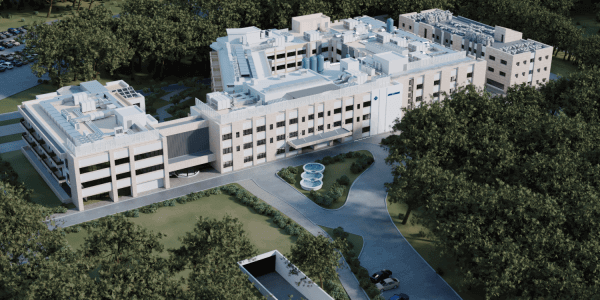NBS STEM CELL THERAPY CLINIC
e-mail : head_office@nbscience.com
_______________________________
APPLICATION OF STEM CELLS:
- vascular disease of the lower extremities (occlusive disease, diabetic microangiopathy of the lower extremities (diabetic foot), obliterating atherosclerosis of the lower limbs);
- atherosclerotic heart disease, coronary heart disease, myocardial infarction;
- pancreatic necrosis;
- recovery of intervertebral discs;
- psoriasis;
- trauma and degenerative disease of the cartilage (arthritis, arthrosis);
- restoration of bone defects (false joints);
- Crohn’s disease, ulcerative colitis;
- diabetes types I and II;
- degenerative diseases of the liver (cirrhosis);
- acute renal failure (glomerulonephritis);
- burns (combustiology);
- Reconstructive surgery, aesthetic medicine, cosmetology:
- Wrinkle;
- treatment of vitiligo;
- rejuvenation (anti-aging therapy, anti-age therapy);
- restore breast shape after partial resection or complete removal of the breast;
- resorption of keloid scars.
There are several types of stem cell therapies used in the treatment
1) Induced pluripotent stem cells (also known as iPS cells or iPSCs, IP stem cells ) therapy
2) Autologous stem-cells therapy
3) Allogeneic stem cells therapy
Advantages:
1) 30+ years of experience in stem cell technology
2) Certificates of Analysis (to certify the quality and purity of stem cells )
3) Individual stem cell treatment dosage
4) Own stem cell laboratory and cryobank
1) Induced pluripotent stem cells (also known as iPS cells or iPSCs, IP stem cells )
are a type of pluripotent stem cell that can be generated directly from adult cells.
The iPSC technology was pioneered by Shinya Yamanaka’s lab in Kyoto, Japan, who showed in 2006 that the introduction of four specific genes encoding transcription factors could convert adult cells into pluripotent stem cells.
Pluripotent stem cells hold promise in the field of regenerative medicine.
Because they can propagate indefinitely, as well as give rise to every other cell type in the body (such as neurons, heart, pancreatic, and liver cells), they represent a single source of cells that could be used to replace those lost to damage or disease.
Since iPSCs can be derived directly from adult tissues, they not only bypass the need for embryos, but can be made in a patient-matched manner, which means that each individual could have their own pluripotent stem cell line. These unlimited supplies of autologous cells could be used to generate transplants without the risk of immune rejection.
2) Autologous stem-cell transplantation
(also called autogenous, autogeneic, or autogenic stem-cell transplantation and abbreviated auto-SCT) is autologous transplantation of stem cells—that is, transplantation in which stem cells (undifferentiated cells from which other cell types develop) are removed from a person, stored, and later given back to that same person.
Although it is most frequently performed with hematopoietic stem cells (precursors of blood-forming cells) in hematopoietic stem cell transplantation, cardiac cells have also been used successfully to repair damage caused by heart attacks
Autologous stem-cell transplantation is distinguished from allogenic stem cell transplantation where the donor and the recipient of the stem cells are different people.
3) Allogeneic stem cells
In an allogeneic transplant, stem cells are collected from a matching donor and transplanted into the patient to suppress the disease and restore the patient’s immune system. An allogeneic stem cell transplant is different from an autologous stem cell transplant, which uses stem cells from the patient’s own body.
Induced pluripotent stem cells, iPSCs, Embryonic stem cells, Autologous stem-cells, Allogeneic stem cells therapy
Stem cell therapy facilities:
STEM CELL THERAPY
CONTACTS:
e-mail : head_office@nbscience.com
TESTIMONIALS
Rejuvenation (anti aging)
Name: S.S.
Age: 72
Symptoms/Diagnosis: Interested in Rejuvenation/Anti-aging Therapy
Treatment Date: October 2017
Treatment Results: The treatment was a life changing affaire for him and gave him back his youth. In his own words, in an interview conducted in March 2017, our patient mentioned that since the treatment, his knee pains have disappeared, his short term memory is back, and amazingly, he does not need to use his glasses anymore to drive his car and read his emails and daily newspaper. However, the bigger telling tale of this success story is that since undergoing our therapy, this family doctor has been coming back every 3 to 4 months to bring patients from his own clinic as well as referrals to come benefit from our various stem cell therapy programs.
Patients have come for rejuvenation and anti-aging therapy, but some of them have also come to treat more serious ailments including severe cases of diabetes, arthritis, and erectile dysfunction.
Name: K. B.
Age: 74
LETTER FROM THE PATIENT: “I am 74 years young I have been healthy most of my life, other than the occasional colds, flu and headaches caused by stress. I’ve always experienced lots of physical vitality. I had cataract surgery after which one of my eyes developed a herpes outbreak which, aside from being painful and almost rendering me blind, stressed me out to the max.
I was forced to take heavy anti-viral medication, which caused some bad side effects. A few months later I developed stomach ulcers caused by h-pylori bacteria. I was put on an intense 2-week anti-biotic regimen. The side effects were devastating and I felt like I would never feel strong and vital again. That’s when I knew I had to do something out of the ordinary to get my health and vitality back.
Treatment Date: December 2017
Chronic Pain and Arthritis
Name: A. F.
Age: 39
Symptoms/Diagnosis: Fibromyalgia/Chronic fatigue
Treatment Date: July 2017
Diabetes Mellitus
Name: S. S. Age: 49
Symptoms/Diagnosis: She suffers from diabetes and related complications including a blurred vision and farsightedness (hyperopia) at 600. Her HbA1C factor is at 7.8% (according to the American Diabetes Association, an HbA1C factor above 6.5% is an indication of diabetes). She can barely see on the day of her treatment.
Treatment Date: 21 August and September 3 2017
Evaluation after Therapy: 18 September, 2 weeks after her latest stem cell therapy
Treatment Results: Her HbA1C is down to 6.1% and her eyesight is down at 300. She also reported important physical improvements including:
- More strength – used to sleep all day long on Sundays
- Walks straight forward and quicker – used to wobble all over
- Looks healthier – used to look strained with pale haggard face
- Her Hematocrit level (Hct – a way to measure a person’s complete blood count” ) increased from 31 to 36. A normal range for female is 37-48.
- Improvement of her eyesight – she can see once again the clouds in the sky
- No more treatment needed from the eye doctor
Other Illnesses
Name: P. S. Age: 71
Symptoms/Diagnosis: At age 71, his health condition is normal. He has slight allergies and some sneezing early mornings. He is also bald at the middle of his head as he started losing his hair from middle age on. A peculiar issue with this patient is that he has suffered from stuttering since he was born. This is something he has learned to live with and accepted long time ago that there was no cure for it.
Treatment Date: March 2017
Evaluation after Therapy: 6 months later
Treatment Results: After therapy, his sneezing disappeared a few weeks later as well as he also noticed new hair growth. His endurance, strength and energy also went up. He could notice the difference quite readily since he is an avid golfer and his game level increased a few notch. Most unusual though, his stuttering went away. He now enjoys a second lease on life singing at karaoke bars with friends. And for the first time ever, he can now argue back with his wife and sometimes win an argument.
_________________________



